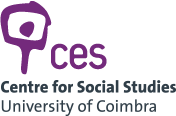TsuRIMA
TSUnami RIsk MAnagement for spatial planning and civil protection
On the 1st November 1755 the Portuguese coast was inundated by a tsunami with catastrophic consequences. Despite the importance of this event, we are still unsure about the seismic source, and the propagation and inundation characteristics of that tsunami. These doubts are even more surprising, knowing that today, the repetition of an event with similar severity would have much worse consequences. Thus, the main aim of this project is to develop a methodology for tsunami risk management and assessment, to be used for spatial and emergency planning and management. Despite the uncertainty about the location of the seismic source that generated the 1755 tsunami, it is possible to produce a robust propagation and inundation model of that tsunami, supported by the characteristics of the historical event. The knowledge obtained from the tsunami model is fundamental to establish useful measures for the mitigation of this sort of risk.
Considering the physical characteristics of the Portuguese coastal area, the spatial distribution of the population, the current variety of economic activities, as well as the historical accounts reporting different heights of tsunami waves, 4 coastal zones were selected (Vila do Bispo, Albufeira, Setúbal and Figueira da Foz). These areas are considered to be representative of the physical and human diversity of the coastal zone, which is necessary to produce nationwide methodological guidelines.
The Project will last 36 months and is organized in 4 Work Packages (WP) with 11 Tasks (T). The WP1 is dedicated to the tsunami numerical simulation, i.e. the exploration of tsunami physical parameters, ranging from the generation in deep ocean to the maximum limit of the inundated areas. This WP includes (i) analysis of the historical accounts, (ii) data and map collation, (iii) validation of the tsunami source model, and (iv) production of tsunami hazard maps through the detailed calculation of inundation areas.
The WP2 is devoted to the assessment of the exposed elements to tsunami inundation. This WP consists of five steps: (i) evaluation of the exposed population (resident and floating) as well as commuting flows, (ii) identification and characterization of buildings, infrastructures, facilities and the value of these assets , (iii) identification and characterization of vital services and functions to society as well as the critical elements associated with civil protection and emergency management, (iv) identification and quantification of the existing economic activities, as well as basic utilities with societal relevance, and (v) establishment of mappable social vulnerability indices adjusted to exposition of tsunami hazard.
The WP3 involves the evaluation of the impact of tsunamis and associated risks. Thus, the hydrodynamic modelling of tsunami inundation is combined with the maps of exposed elements as well as with the composit maps of social vulnerability, in order to produce tsunami risk maps. The spatial variation of the tsunami impact is appraised in accordance with the territorial management tools available, particularly those related to land management, protection of coastal areas, natural heritage and marine domain. The task also spans an articulation process between impact scenarios and civil protection response system, marine security operations, and industrial and commercial activities management.
The results of this project culminate in the WP4, with the writing of a manual on tsunami risk management, focusing in particular on land use planning and civil protection, but also providing the framework for a warning system and information and awareness tools for citizens. These guidelines will be given to the authorities, and transfer of knowledge will be performed in seminars and workshops. Moreover, the team will publish the results in peer reviewed journals and in national and international conferences.
Therefore, this project is innovative and relevant: it combines the numerical simulation of an extreme physical phenomenon with social and economic vulnerability and focuses on a problem of great importance to spatial planning. Whilst numerical simulation is the only possibility of assessing tsunami risk, it allows the analysis of different scenarios using a variety of physical and human parameters for different types of coastal areas. The resulting maps of tsunami hazard for the pilot areas are not only an important contribution to land management, from the local to the regional levels, but also a pivotal tool to minimize the risk (at the population, economy and infrastructure levels) and improve the level of preparation in an emergency situation, both for the society and the civil protection agencies.
Books; scientific articles; conferences
Principal Contractor is Instituto de Gestão e Ordenamento do Território - Universidade of Lisbon
Angela Cristina da Silva Santos (coord)
Eduardo Barata
Inês da Fonseca
José Luís Zêzere
José Manuel Mendes
Leandro Barros
Margarida Queirós do Vale
Mário Rui Neves
Susana da Silva Pereira

